Overview
Organizations
- HOME
- >
- Recent events
011
Development of wearable assistive systems that can contact softly and safely with wearers
Doki Laboratory of Department of Information and Communication Engineering develops wearable assistive systems taking safe and effective assists for wearers. Some prototypes of assistive robot and soft actuators are developed; robots enabling to detect contact force with wearers via tactile pressure sensors for ensuring safety, fabric-type actuators generating three-dimensional motions for assisting human naturals.
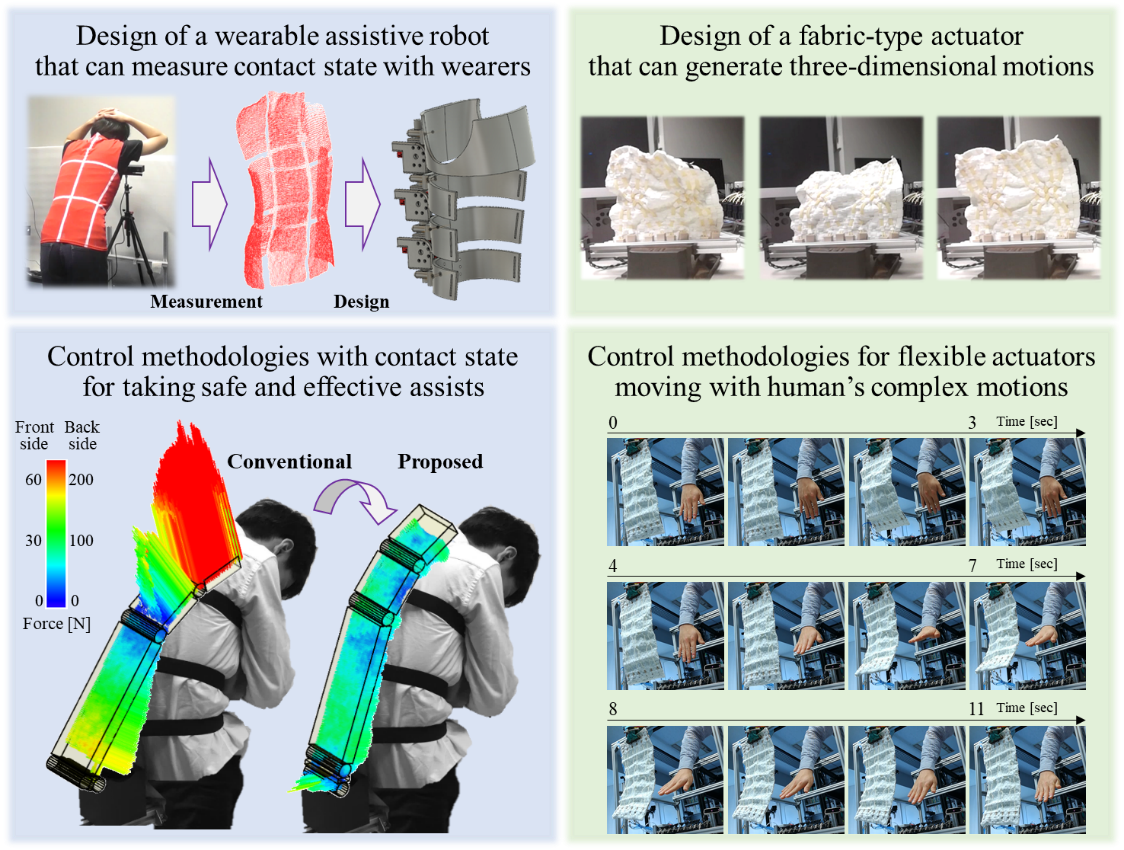
Examples of researches for safe and effective assist systems
010
pn diodes with GaN theoretical performance limit was demonstrated.
GaN power devices have attracted attention to realize an energy-saving society, but it was difficult to fabricate devices that showed sufficient breakdown voltage. In this research, we developed a fabrication technology of a Butte type structure that deeply and vertically etched GaN. By using this method, we succeeded in fabricating GaN vertical pn diodes with uniform electric field distribution and the breakdown voltage of the theoretical performance limit.
Details are here

(a) Schematic image of the Bute type GaN pn diode, (b) Cross sectionnal SEM image, (c), (d) Simulation result of electric field distribution, (e) Emission image by avalanche breakdown current, (f) Reverse direction J- Etching depth dependence of V characteristics
009
New longitudinal network observatories, which measure aurora and electromagnetic waves from geospace, have been developed
The Space Observation group has been installed high-sensitive cameras, magnetometers, and antennas at Russia, Canada, Alaska, Iceland, and Finland to monitor longitudinal extent of aurora and radio waves from geospace since 2016, in collaboration with the Arase satellite of JAXA. This project is named as PWING Project. A lot of scientific results have been obtained from this project.
Details are here
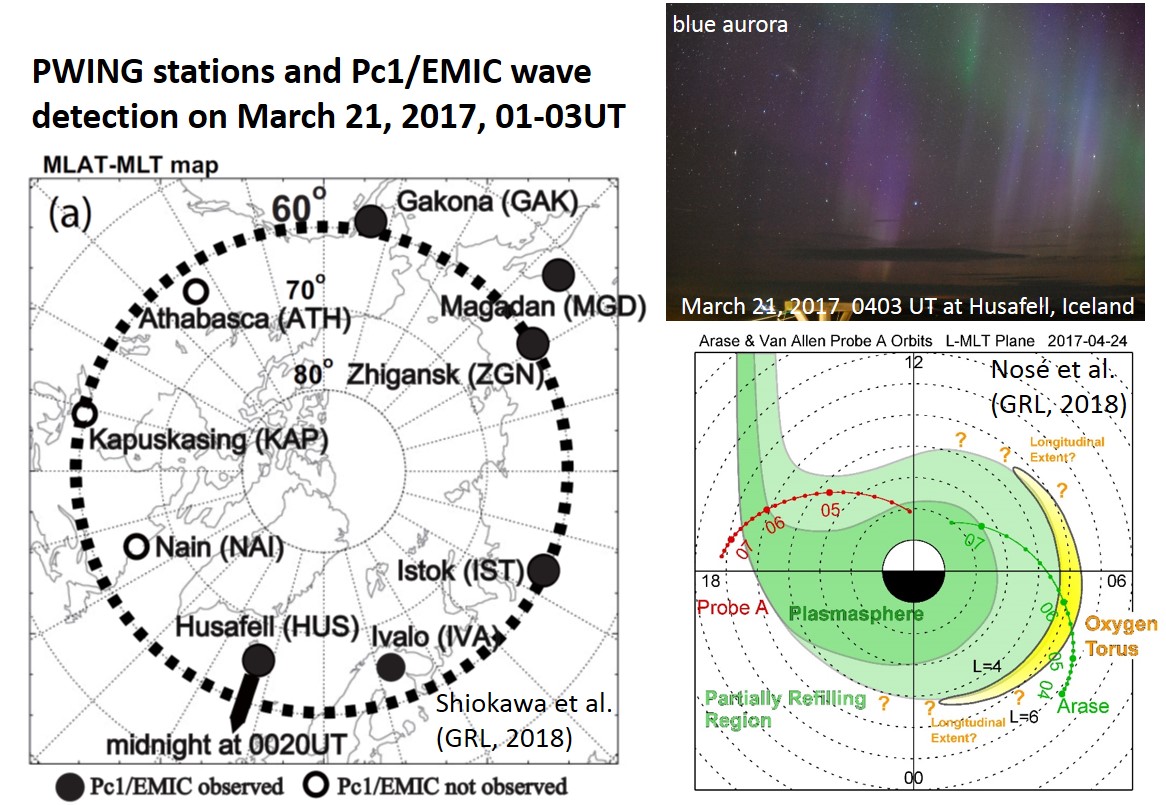
(Left) Observation sites of the PWING Project. The Pc1/EMIC waves were observed over 200-deg longitudes at the arrival of specific solar-wind structure called CIR on March 21, 2017. (top right) Interesting blue aurora was observed at that time at Husafell, Iceland (Shiokawa et al., GRL, 2018). (bottom right) Longitudinal distribution of oxygen ions in geospace around the earth (Nosé et al., GRL, 2018).
This work is supported by JSPS KAKENHI (JP 16H06286; 16H04057).
008
Early Detection of Symptoms of Dementia is challenged by measuring EEG (Electroencephalogram).
Furuhashi laboratory identified the model to estimate MMSE (Mini Mental State Examination) score using EEG data measured by a smart chair* equipped with non-contact magnetic sensor. It is expected that the possibility of dementia can be detected at an early stage while an elderly person living alone is relaxing with a smart chair every day.
*Under development in Sustainable Platform Research Group of Nagoya university COI (Center of Innovation)
Details are here
Details are here
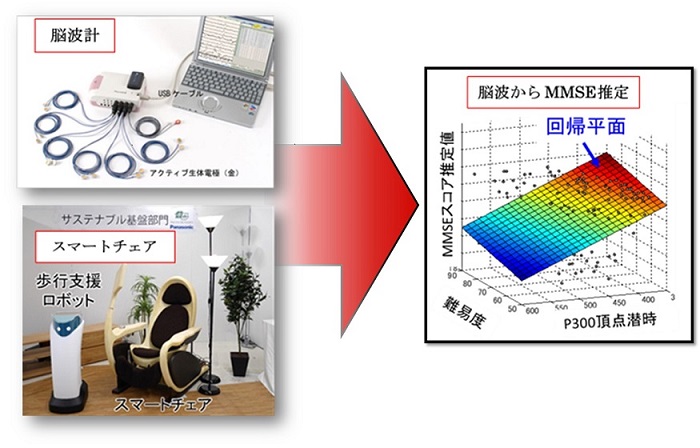
007
Real-time Terahertz spectroscopy and fast spectroscopic imaging system using multi-wavelength terahertz parametric generation were newly developed.
Real-time terahertz spectroscopy and fast spectroscopic imaging system were succeeded using multi-wavelength terahertz parametric generation and detection technique. It can be used for illicit drug detection in a mail and nondestructive testing of the plastic product.
Details are here
Details are here
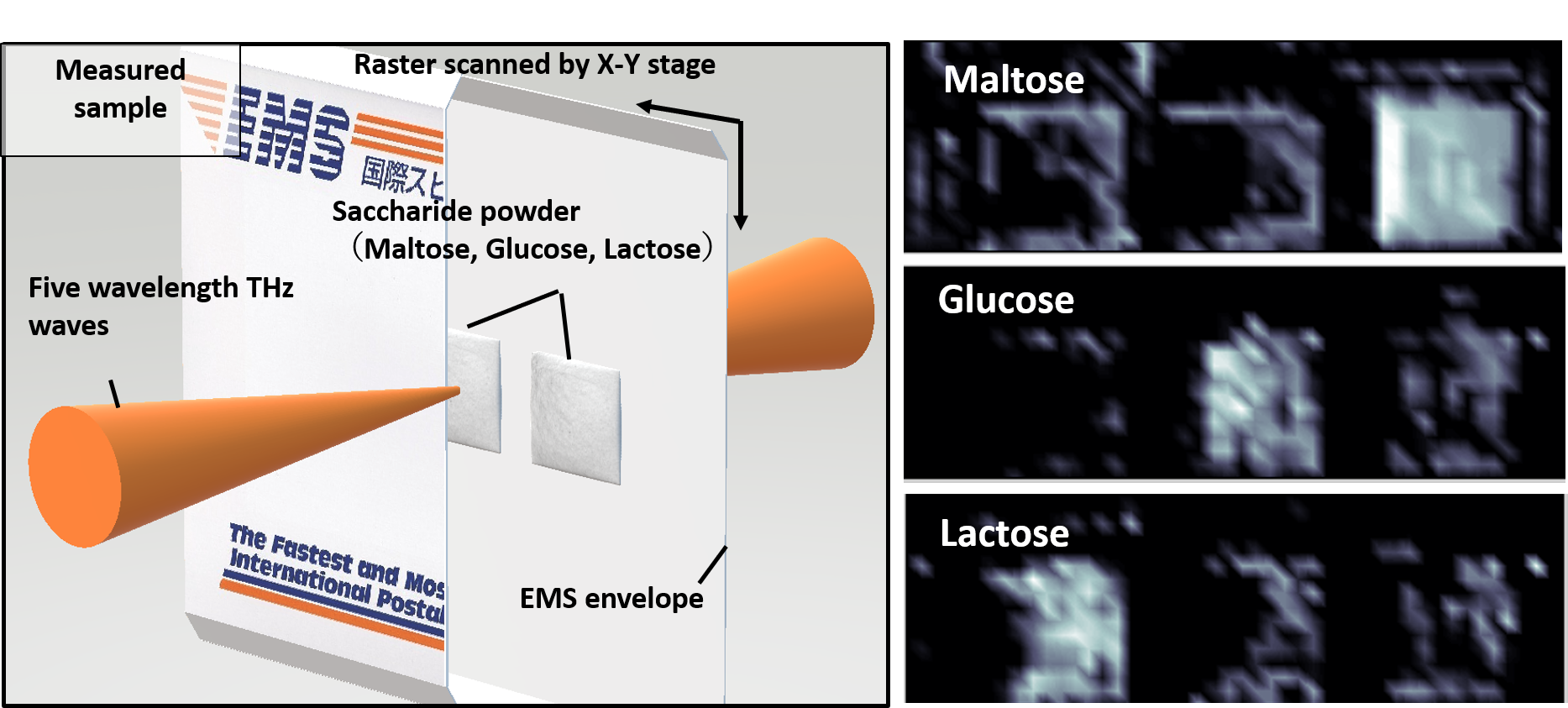
We have succeeded in the real-time terahertz spectroscopy and fast spectroscopic imaging system using multi-wavelength terahertz parametric generation and detection technique.
006
DNA damage by tritium disintegration was estimated qualitatively, using molecular dynamics simulation.
We estimate the DNA damage by disintegration of tritium to helium (beta decay) qualitatively using Molecular Dynamics (MD) simulation. In the simulation, we adopted telomere structure of the human DNA. Moreover, we replaced some hydrogen atoms in guanine of the telomere to helium atoms. Then we perfumed MD simulation and analyzed the DNA structure. From this simulation, we found that as the number of the replaced helium increases, the double helix structure of the telomere becomes more fragile.
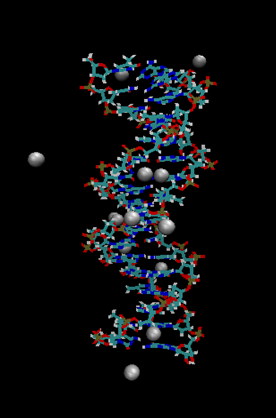
Fig : As the initial configuration, some hydrogen atoms in guanine of the telomere are replaced to helium atoms (Gray balls). We performed MD simulation, and it is found that this replacement weakens the hydrogen bonding between DNA chains.
005
The book of Todai Robot Project was published from University of Tokyo Press
Sato-Matsuzaki Laboratory has conducted research on automatic solving university-entrance exam from 2013, as a member of Todai Robot Project. Our research results in three subjects, Japanese Language, Mathematics, and World History, are described in this book.
Details are here
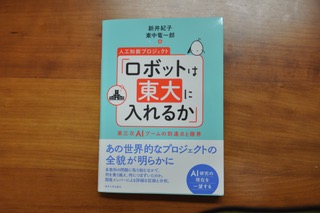
004
Execution of Stored Programs in a Superconductor Single-Flux-Quantum Microprocessor with Embedded Memories was demonstrated at 50 GHz
We successfully executed programs stored in an instruction memory in a superconductor single-flux-quantum bit-serial, 8-bit microprocessor using 50 GHz clocks. This is the first demonstration of stored-program computing using non-semiconductor integrated circuits.
Details arehere
Details arehere
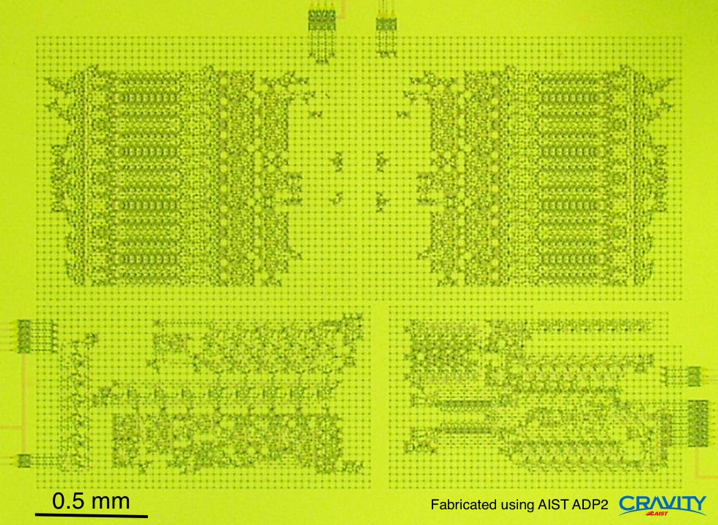
Microphotograph of demonstrated microprocessor (Fabricated with the AIST process.)
003
The highest superconducting property at liquid nitrogen temperature was achieved by introduction of well-aligned artificial pinning centers into high temperature superconducting films.
Details are here
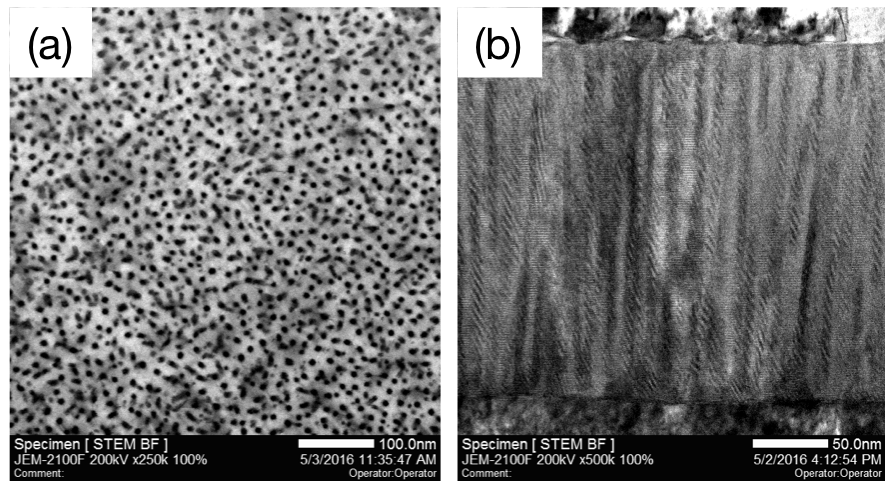
(a) plan-view and (b) cross-sectional transmission electron microscopy in RE-based high temperature superconducting films with well-aligned artificial pinning centers.
002
Success of non-destructive deep imaging of mouse brain using 1.7 um OCT/OCM
Researcher in Nishizawa lab. in Dept. Electronics developed high resolution optical coherence tomography (OCT) / optical coherence microscopy (OCM) using wideband ultrashort pulse fiber laser source at 1.7 um for the first time. Using the developed system, they succeeded in the non-destructive measurement of deep part of mouse brain (hippocampus) with micrometer resolution.
Details are here
Details are here
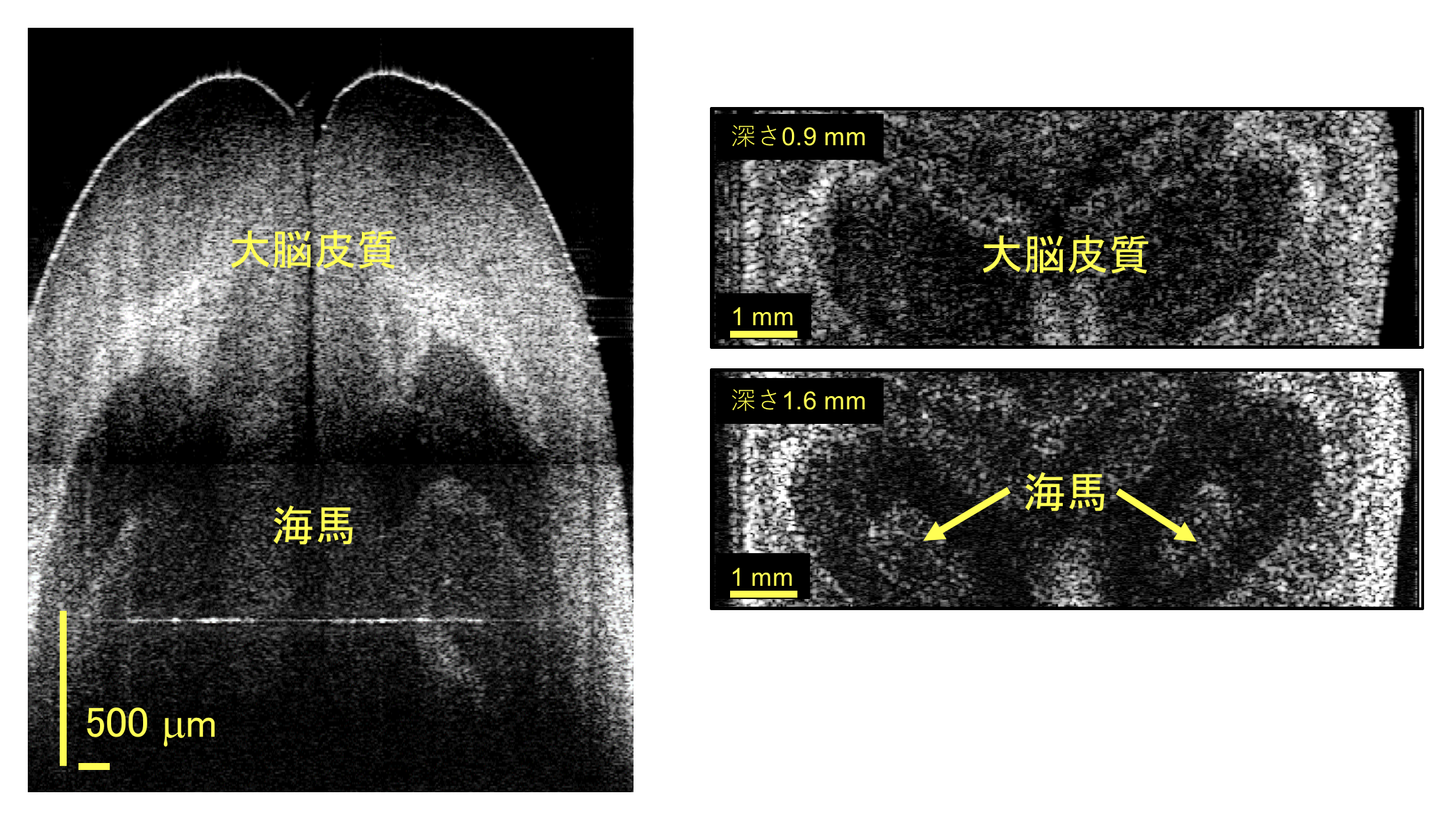
001
Large-scale fuzzy metallic nanostructure processing method was newly developed.
Large-scale fiberform nanostructures can be developed on metal surfaces by additional precipitation of metallic particles together with He ion bombardment in plasmas.
Details are here
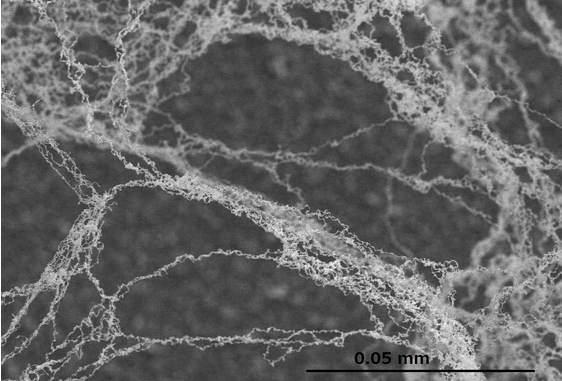
Fig : A scanning electron microscope micrograph of a part of large-scale fuzzy structure.


